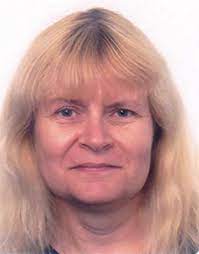Public Guest Talk: Prof. Dr. Ingela Parmryd, University of Gothenburg, Sweden
The RTG welcomes Ingela Parmryd as a guest speaker on Tuesday, 4th of December 2018.
Titel: “The organisation of the plasma membrane“
We study the relationship between ordered plasma membrane nanodomains, known as lipid rafts, actin dynamics and the cellular environment in live T cells. Lipid rafts in the plasma membrane are in the liquid ordered (lo) phase with the remainder in the more fluid liquid disordered phase (ld). The lipid packing is quantified using the polarity sensitive membrane dyes laurdan that distributes equally between the two leaflets and di-4-ANEPPDHQ that exclusively reports on the outer leaflet. Stabilising actin filaments increased the fraction of lodomains in the plasma membrane while disrupting actin polymerisation had the opposite effect [1]. Importantly, altering the dynamics of actin filaments affected the lipid packing of the outer plasma membrane leaflet, supporting membrane coupling. Membrane blebs, regions unconnected to actin filaments, had a higher fraction of ld-domains than the bulk plasma membrane. Decreasing the level of phosphoinositides, which lowers the number of potential attachment points for actin filaments in the plasma membrane, also led to an increased portion of ld-domains. When assessing diffusion in membranes, we have shown that cell surface topography must be recognized to allow solid data interpretation, both to avoid a general underestimation of diffusion rates and the misinterpretations of Brownian motion as anomalous diffusion, which is the basis of elaborate membrane models [2]. We introduce the shortest within surface distance (SWSD) measure as an improvement on 2D and 3D Euclidean measurements, but to account to for the topography-induced sub- and superdiffusion a more complex strategy is required [3]. In general, aggregation of both lipid raft markers and nonlipid raft markers increased the fraction of lo-domains, which was strongly correlated with an increase of polymerised actin just beneath the plasma membrane. However, the aggregation of the T cell receptor (TCR) resulted in the reorganisation, not the formation, of lo-domains, which argues that the TCR resides in lo-domains in resting T cells [4]. In summary, our results suggest that pinning of plasma membrane components in either leaflet leads to the formation of lodomains [5], which downplays lipid-lipid interactions and favours lipid-protein interactions as the main driving force behind the formation in vivo.
[1] J. Dinic, P. Ashrafzadeh, I. Parmryd, Actin filaments attachment at the plasma membrane in live cells cause the formation of ordered lipid domains, Biochim Biophys Acta, 1828 (2013) 1102-1111. [2] J. Adler, A.I. Shevchuk, P. Novak, Y.E. Korchev, I. Parmryd, Plasma membrane topography and interpretation of single-particle tracks, Nature methods, 7 (2010) 170-171. [3] J. Adler, I.-M. Sintorn, R. Strand, I. Parmryd, Conventional analysis of movement on non-flat surfaces like the plasma membrane makes Brownian motion appear anomalous, Communications Biology, (2018), In press. [4] J. Dinic, A. Riehl, J. Adler, I. Parmryd, The T cell receptor resides in ordered plasma membrane nanodomains that aggregate upon patching of the receptor, Scientific reports, 5 (2015) 10082. [5] T. Fujimoto, I. Parmryd, Interleaflet Coupling, Pinning, and Leaflet Asymmetry-Major Players in Plasma Membrane Nanodomain Formation, Front Cell Dev Biol, 4 (2017) 155.
Official announcement: RTG1962_Ingela Parmryd
Research profil of Prof. Dr. Ingela Parmryd, University of Gothenburg, Sweden [link]
Venue: Department Biology, Building B1, Floor 00, Seminar Room Cell Biology (00.581), Staudtstraße 5, 91058 Erlangen.
Time: 5.00 p.m. (s.t.) –> Drinks will be served, starting at 4.30 p.m.

